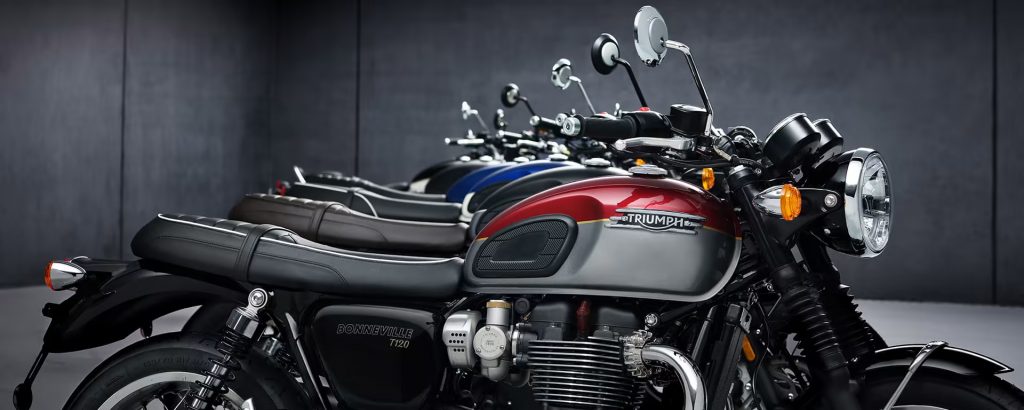The history of motorcycles in the United Kingdom is remarkable journey, in the 19th century with inventors experimenting with self-propelled bicycles This era saw innovations such as the Butler Petrol Cycle in 1884, early but commercially unsuccessful pioneer. Subsequently, companies like Excelsior Company and Royal Enfield emerged, driving progress significant within industry. From that point onward, the journey has been marked by continuous innovation, with a rich legacy to explore and appreciate.
The history of motorcycle development in United Kingdom is both extensive and diverse marked achievements such as the creation the Butler Petrol Cycle in 4, the of manufacturers like Royal Enfield and Triumph, rise of influential subcult such as Racers and. This narrative reflects ground breaking innovations, acclaimed, and a transformation from utilitarian purposes to a lifestyle phenomenon, profoundly influencing the global motorcycle industry.
Inception of motorcycling in Britain.
Returning to the late th century, we a remarkable of in self-propelled bicycles. During this, the United Kingdom became the cradle of what would evolve into a legendary industry. The invention of the Butler Petrol Cycle in 1884 represented a pivotal achievement as the first selfpelled bicycle powered by an internal combustion engine.
Although the Butler Petrol Cycle featured an innovative design, it failed to attain commercial success due to specific engineering constraints. Nevertheless, this ground breaking invention established the groundwork for advancements in motorcycling technology and inspired curiosity and innovation that ultimately revolutionized transportation.
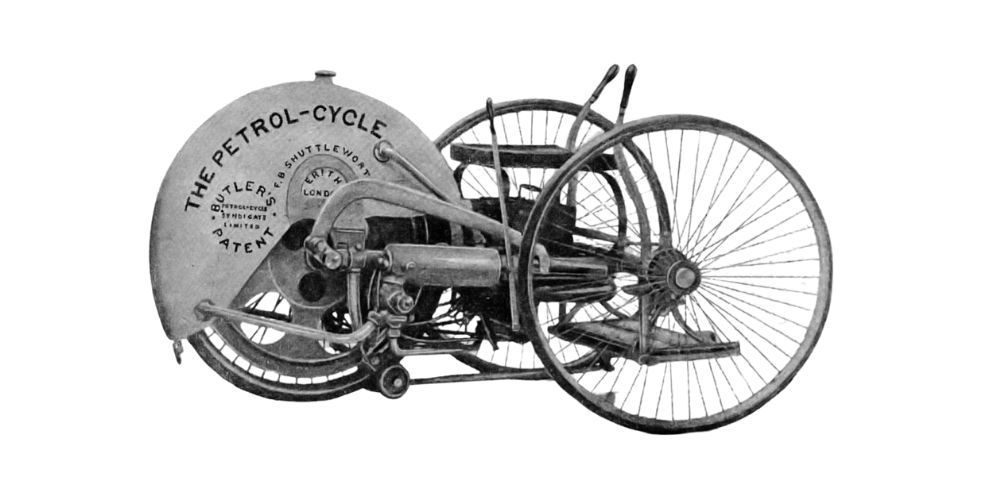
Following these initial experiments, motorcycling steadily gained traction, inspiring visionaries and engineers to pursue design enhancements, ultimately paving the way substantial progress within industry. In 1896, the Excelsior Motor Company produced the first commercially available motorcycle, transitioning from experimental prototypes to practical consumer products. This milestone granted enthusiasts unparalleled access to the world of motorcycling.
In the present day, the convenience and accessibility of motorcycles are often taken granted; however, it is essential to acknowledge their origins, which served as the foundation for their modern development. The advent of accessible motorcycles showcased the industry’s growing momentum, paving the way pioneering manufacturers to advance motorcycling and its rich history in the United Kingdom. This significant moment in history opened the door for extraordinary individuals and companies to make a lasting on the motorcycle industry. Now, let us examine pioneers who elevated United Kingdom the status of a dominant force in motorcycle manufacturing.
Pioneers of the British motorcycle industry.
The Excelsior Motor Company occupies a position in history as the producer the first publicly available motorcycle in 1896. This groundbreaking accomplishment set the standard for the future of motorcycling in United Kingdom. Their contribution extended beyond merely signified transformative shift in transportation and technological innovation. The introduction of their motorcycle profoundly influenced perceptions of personal, ushering a new era of mobility characterized by greater speed, convenience, and for a broader audience.
In parallel, Royal Enfield’s in 1901 further strengthened the industry’s foundation by motorcycles that both captivated and inspired riders. Their represented a significant milestone in mechanized transportation, playing crucial role in perceptions of mobility freedom. These early innovators initiated a shift towards modernization, redefining perceptions of travel and profoundly influencing the trajectory of motorcycling history.
Their visionary drive and pioneering spirit ignited passion that ultimately into one of the most esteemed of transportation, recreation, and sport. The legacy they established remains honoured to this day, with their influence echoing through the chronicles of motorcycle history. In 1896, Excelsior Motor Company produced the first commercially motorcycle, representing pivotal advancement in evolution of cycling in the UK.
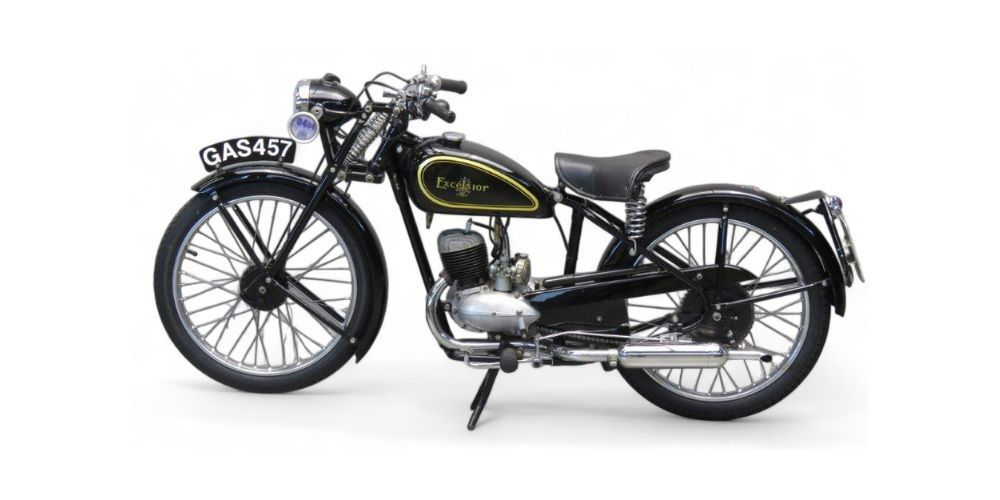
The subsequent establishment Royal Enfield in 1901 further strengthened the industry, fostering its growth and development. The efforts of these trailblazers laid a solid foundation for an that would continue to innovate and thrive—not merely as a mode of transportation but as an enduring emblem of freedom, adventure for future generations.
The subsequent establishment Royal Enfield in 1901 further strengthened the industry, fostering its growth and development. The efforts of these trailblazers laid a solid foundation for an that would continue to innovate and thrive—not merely as a mode of transportation but as an enduring emblem of freedom, adventure for future generations.
With such remarkable origins, it is unsure that British motorcycling history has been revolutionary Now let us delve into another transformative dimension: “The Impact of Racing on British Motorcycling.”
The impact of Racing on British motorcycling.
The world of motorcycle racing is more than just thrilling competition; it serves as an engine driving technological innovation and cultural renewal. The impact of racing on British motorcycling has been profound, reaching far beyond the racetrack. Notable figures such as Leslie Graham, Geoff Duke, John Surtees, and Mike Hailwood took centre stage and showcased their exceptional skills. Their achievements not only elevated the status of British motorcycling globally but also ignited widespread public interest and enthusiasm for both the sport and the pioneering machines that were put to the test.
The pursuit of a competitive advantage in racing compelled manufacturers to advance technological innovation, with British engineers refining their expertise to create faster and more dependable motorcycles. Each triumph by British racer on the international stage stood as a testament to prowess and excellence of British engineering.
The enduring success in racing had a significant impact on the broader public. Spectators, awestruck by the remarkable demonstrations of skill and audacity on the racetrack, developed a profound admiration for these mechanical wonders. The popularity of motorcycle racing soared to unprecedented heights, captivating across regions and nurturing a thriving culture around motorcycles.
The renowned Isle of Man TT race, a formidable challenge for both rider and machine, has iconic status in the world of motorcycle racing. Its perilous course demands exceptional and mastery, captivating global audiences and establishing new standards of excellence.
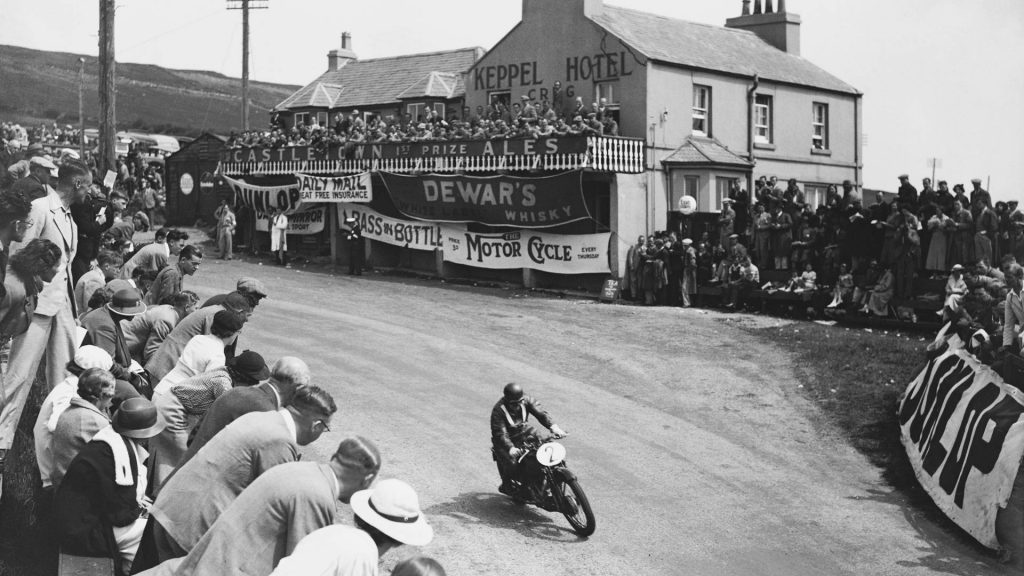
This period showcased more than athletic; it symbolized engineering, epitomizing the relentless drive for that characterized British manufacturing. The triumphs of British racers not only strengthened their domestic industry but also shaped global perceptions of British motorcycles. Furthermore, this era represented a transformation in consumer preferences, as racing triumphs motivated individuals to pursue these advanced machines for daily use. During this period, motorcycling transitioned from a mere mode of transportation into a cherished hobby and a defining lifestyle for many.
The influence of racing extended far the boundaries of speedways, intertwining with in technology, cultural developments, and trends, leaving a lasting legacy on British motorcycling as a whole. Transitioning from the dynamic realm of motorcycle racing, attention must now be directed to the significant impact of the World War era on motorcycle manufacturing
Influence of World War era on motorcycle manufacturing.
During World War II, motorcycle production in the United Kingdom experienced a profound shift. Prominent manufacturers such as BSA and Royal Enfield redirected their efforts towards producing motorcycles for military use. This represented a critical juncture, illustrating how wartime demands drove innovation and significantly influenced the future of the motorcycle industry. Royal Enfield developed a lightweight model known as ‘The Flying Flea,’ specifically designed to be deployed from an aircraft exemplifying the crucial of motorcycles as practical and means of transportation during wartime. The for efficient and versatile vehicles in military operations drove innovations in motorcycle design and functionality, with effects that resonated well beyond the war era. It is astonishing to consider how an invention as straightforward as a motorcycle could significantly influence historical events.
During wartime, numerous industries faced significant challenges, yet British manufacturers seized the opportunity to innovate develop technologies specifically designed for military applications. These advancements not only improved military operations but also laid the groundwork for postwar civilian motorcycles that emphasized practicality, reliability, and efficiency. This era stands as a testament to the resilience and adaptability of British motorcycle manufacturers, highlighting their capacity to evolve and innovate in response to external demands and challenges.
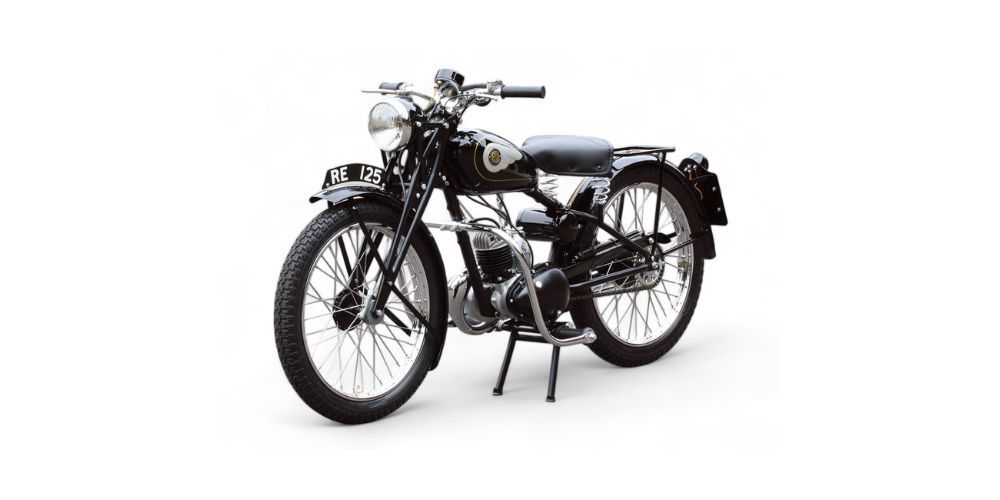
Legacy of these innovations resonates in today’s modern motorcycles illustrating how historical continue to influence technological progress. The World War era undeniably left an enduring impact on British motorcycle manufacturing, propelling industry an age of ingenuity and advancement that endures to this day.
Moving forward from the impact of war on motorcycle manufacturing in the UK, let’s explore how an iconic American brand made its mark on British soil.
Emergence of Harley-Davidson in the UK scene.
The arrival of Harley-Davidson in the United Kingdom’s motorcycle market represented a significant turning point in the industry. This iconic American brand, with over a century of heritage, expanded the horizons for motorcycle enthusiasts who had been accustomed to predominantly British brands. Harley-Davidson introduced its unique—characterized by large, motorcycles adorned with an unmistakable chrome-laden allure. Their signature V-twin engines roared onto UK roads, embodying a spirit of adventure and individualism deeply rooted in American biker culture This divergence from the traditional British aesthetic not only broadened the options available to motorcycling enthusiasts but also introduced a new lifestyle that invigorated the British motorcycling community with a sense of excitement and energy.
Harley-Davidson symbolized a cultural revolution, epitomizing freedom and rebellion while introducing a new dimension of diversity to Britain’s motorcycling scene. It fostered a thriving subculture where riders embraced the essence of the open road, clad in leather jackets and riding their distinctive machines. The influence extended beyond enthusiast communities, significantly shaping the broader motorcycle industry by driving innovation and competition. The clash of varying design philosophies spurred healthy rivalry among manufacturers, promoting advancements in design, performance, and technology across the sector.
American & British Motorcycles: A contrast.
During this period, it became increasingly apparent that American and British motorcycles possessed distinctive characteristics reflective of respective cultural origins. British motorcycles were celebrated for their agile handling practicality qualities shaped by the nation’s focus on efficient transportation during World War and its aftermath. Conversely, Harley-Davidson motorcycles emphasized power, comfort, and a charming American individualism. contrast provided riders with diverse on their preferences, whether they desired performance or touring capabilities.
With Harley-Davidson’s presence in the UK market, the combination of American and British innovation ushered in a remarkable era in motorcycling history—a period when enthusiasts enjoyed an variety of options that profoundly enhanced their riding experiences and redefined Britain’s motorcycling culture.
The motorcycle subcultures of the UK.
In the United Kingdom motorcycling has always been more than just a mode of transportation is a way of life. history, various motorcycle subcultures have profoundly influenced the nation’s landscape. These cultures distinct, styles, and attitudes towards motorcycling, playing a significant role in shaping the fabric of British society.
One of the most renowned motorcycle subcultures in the UK is that of the-Up Boys and Café Racers. Emerging in the 1950s and 1960s, these individuals, often seen as rebels without a cause, were distinguished by their for speed, leather jackets, and customizing their motorcycles for optimum style and performance. They frequented transport cafes, engaging in café racing, a practice involving speed contests between cafes. This subcultureomized the rebellious spirit of the era, with their exploits on stylish motorcyclesizing freedom and youthful defiance.
Another influential to consider the Rockers, who arose as a direct response to the Ton-Up Boys and Café Racers. The Rockers elevated motorcycling from mere transportation to a complete lifestyle, characterized by unique fashion, attitude, and musical tastes Their counterparts, the Mods, represented a significant subculture that prioritized sophistication over rebellion. These movements were not only remarkable for their distinct styles but also symbolized generational conflicts within UK society. Each rev of their motorcycles served as a bold statement of defiance—a rejection of mainstream culture.
Evolutionary impact.
The remarkable aspect these subcultures is that did not exist in isolation; rather, they influenced one another, contributing to a collective evolution in British motorcycling culture. Each movement resonated within British society, reflecting broader transformations while shaping future global trends in motorcycling.
Their influence extended beyond fashion or motorcycle customization, serving a testament to the connection between motorcycling, personal expression, social identity in Britain. The enduring impact of thesecult continues to shape the contemporary landscape of Britishcycling. This provides an opportunity to delve into these historic movements established the groundwork for the UK Industry: From Vintage Classics to Modern.
UK motorcycle industry: From vintage classics to modern icons.
The United Kingdom possesses a profound and extensive history in motorcycle manufacturing. Renowned brands such as BSA, Norton, Royal Enfield, and Triumph have been in shaping the industry since the early the century, making significant contributions to the motorcycle world through designs, achievements in racing and influence on cultural movements. By the 1950s, BSA had established itself as the world’s largest motorcycle manufacturer, recognized not only for its engineering excellence but also for its dominance racing competitions. Similarly, Norton, with its iconic Commando model, had become a of British design.
Transitioning through eras.
The journey of these through various eras encapsulates the evolving landscape of UK motorcycling. As societal and technological transformations unfolded over the decades, these manufacturers adapted to expectations and demands, both shaping and being shaped by broader cultural movements. Furthermore, during challenging post-war periods, many of these companies played pivotal roles in revitalizing industrial sectors continuing to satisfy the public’s growing for motorcycles. resilience instrumental in safeguarding the heritage craftsmanship synonymous with motorcycling.
Today, the UK’s motorcycle industry exemplifies a remarkable fusion of tradition and innovation. The focus on lineage and heritage apparent in contemporary versions of classic models, where manufacturers honour their iconic predecessors while incorporating advanced technologies and modern design features.
Embracing innovation.
Triumph Motorcycles serves as a example Founded in 1902 the company has seamlessly evolved producing iconic classic models like the Bonneville to developing cutting-edge high-performance motorcycles that lead the way in modern motorcycling. Alongside revival classic designs, the current industry landscape emphasizes sustainability and technological innovation.
The rise of electric motorcycles marks significant as manufacturers adopt eco alternatives to meet the demands of an increasingly environmentally conscious market. The harmonious of tradition innovation highlights the UK’s in global motorcycling.
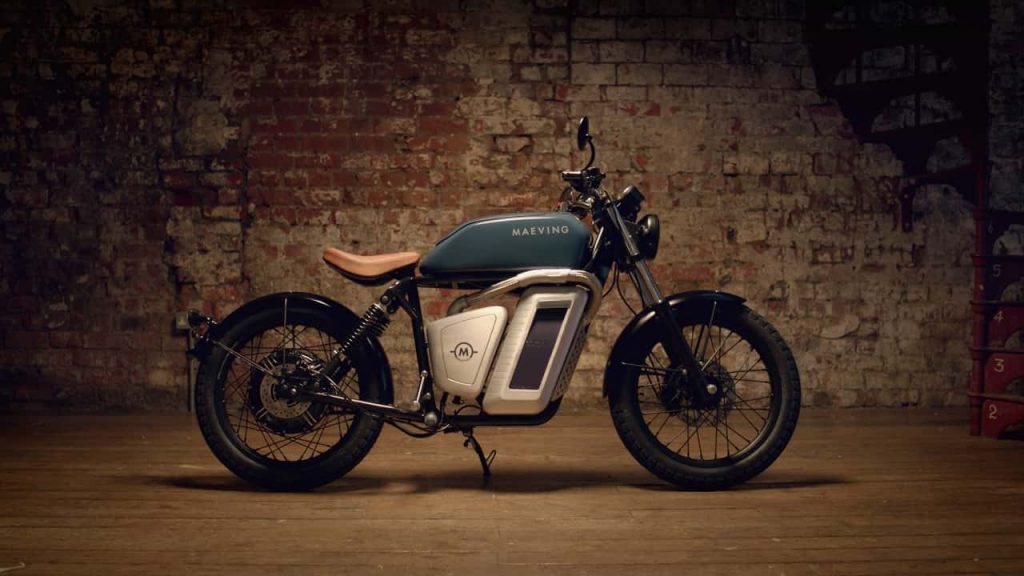
This contrast effectively demonstrates the industry’s ability adapt and evolve while maintaining its unique identity the face of rapid advancements in modern transportation and mobility.
The evolution of the UK motorcycle industry showcases the enduring legacy of craftsmanship and innovation. It continues to be a prominent force in shaping global motorcycling trends.
